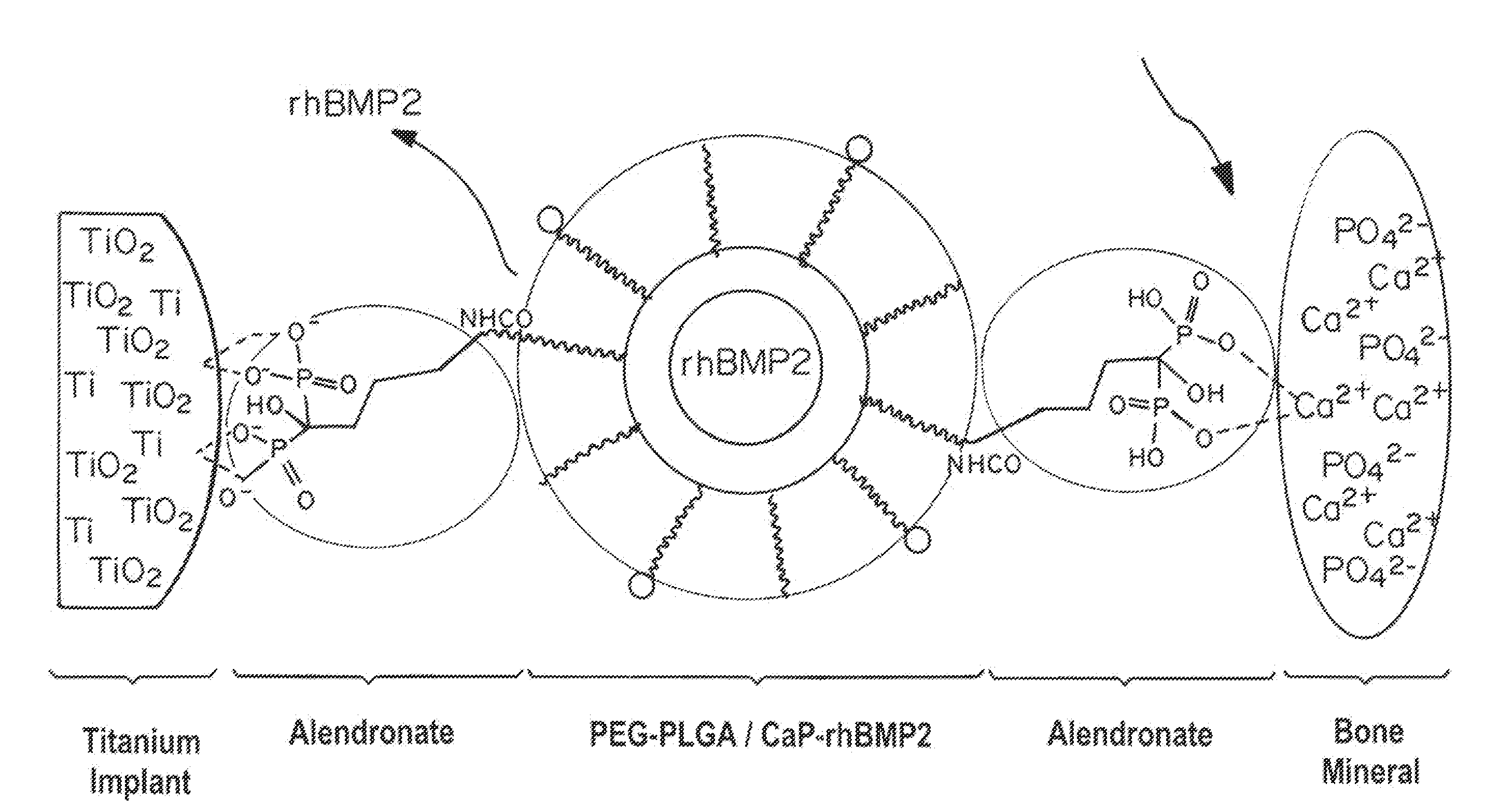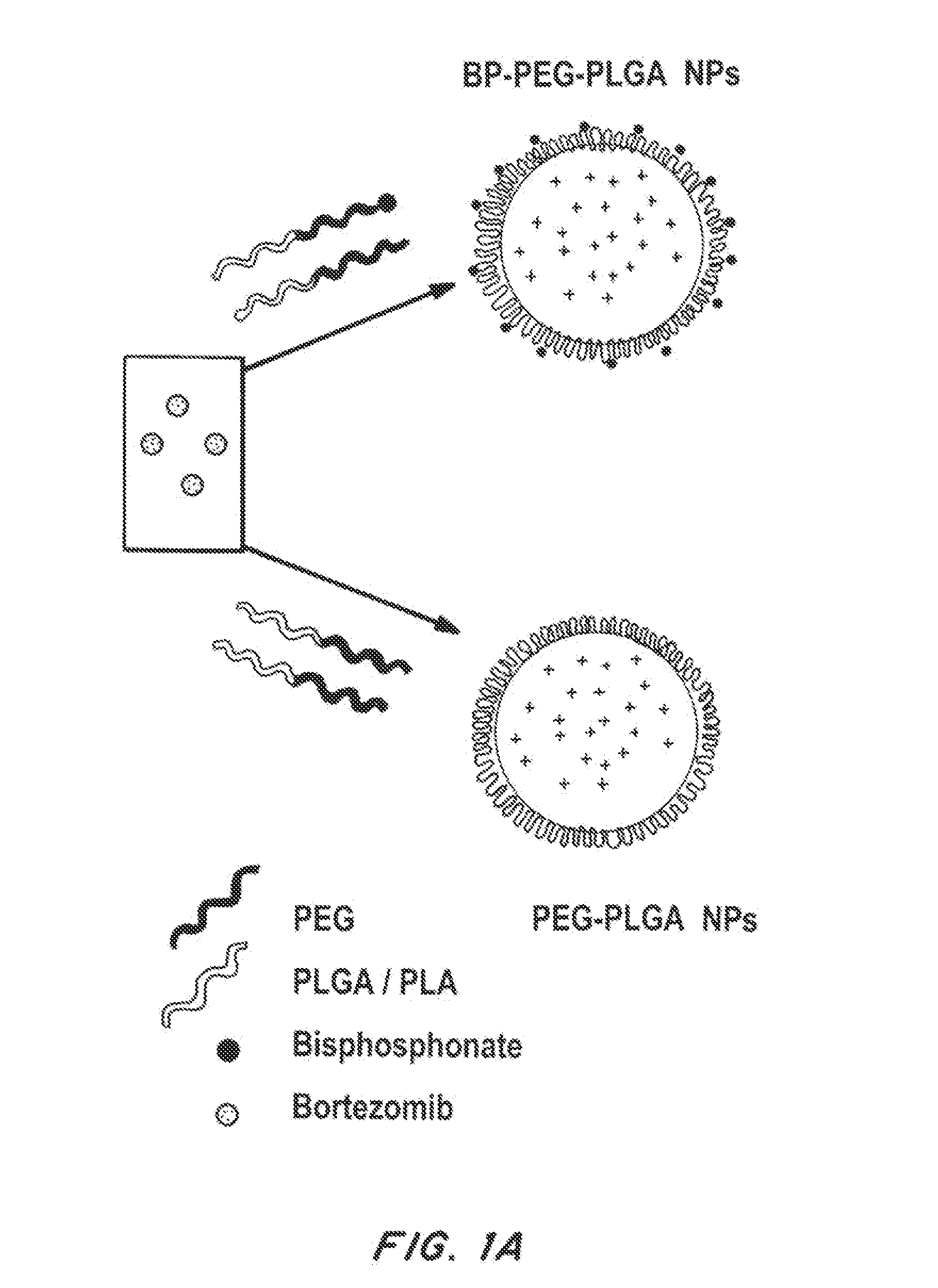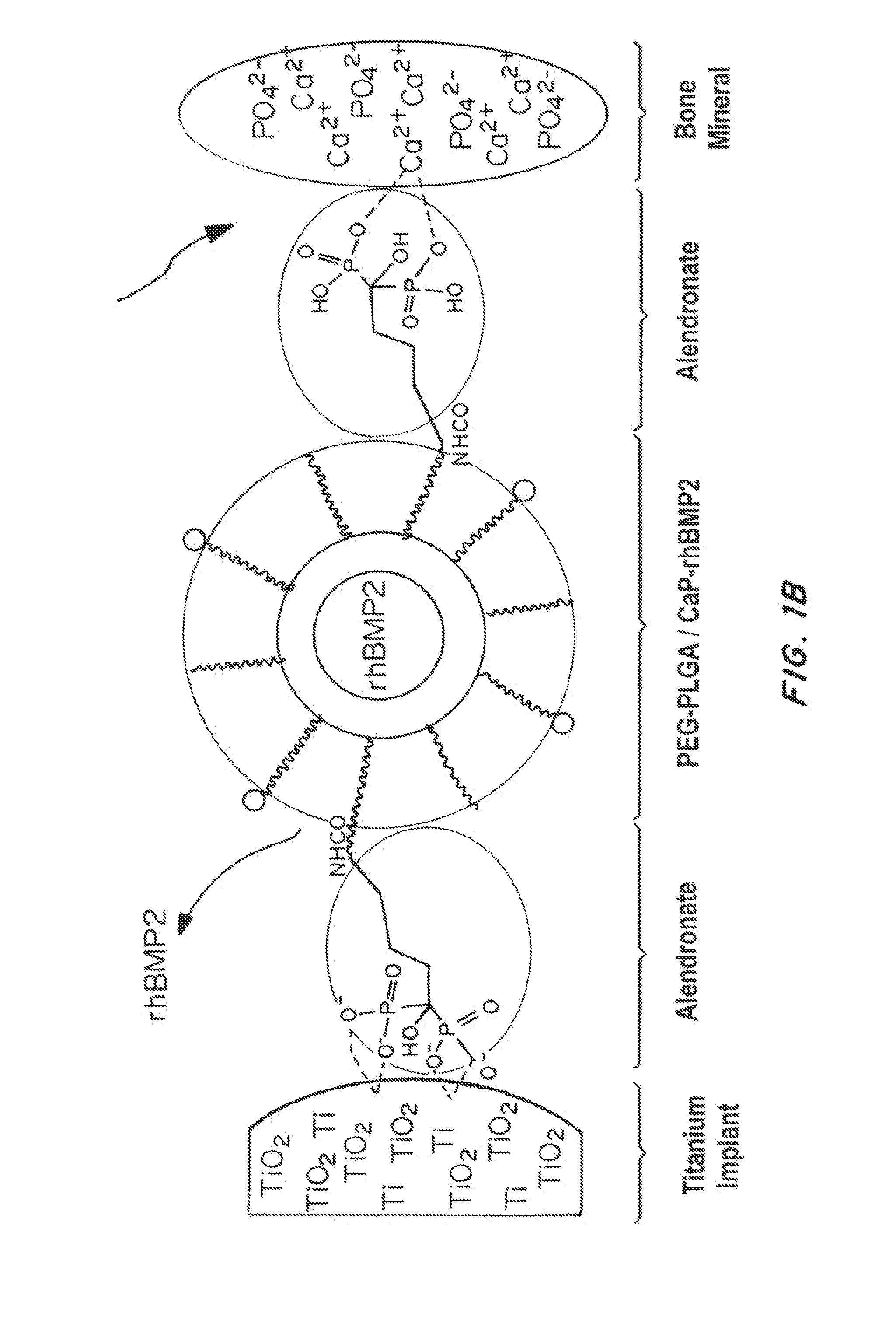Bone and metal targeted polymeric nanoparticles
a polymer and nanoparticle technology, applied in the field of nanoparticles, can solve the problems of increasing the risk of fracture, so as to increase the rate of osseointegration, enhance the osseous integration of the implant, and reduce the risk of fractur
- Summary
- Abstract
- Description
- Claims
- Application Information
AI Technical Summary
Benefits of technology
Problems solved by technology
Method used
Image
Examples
example 1
Synthesis of PLGA-PEG-COOH and PLGA-PEG-Alendronate
[0159]Materials and Methods:
[0160]Reagents
[0161]The polymer Poly(D,L-lactide-co-glycolide) (50 / 50) with terminal carboxylate groups (PLGA, inherent viscosity 0.26-0.54 dl / g in hexafluoroisopropanol, MW 25 kDa) was obtained from Lactel Absorbable Polymers, USA. NH2-PEG-COOH (MW 3400) and BOC-NH2-PEG-COOH (MW 3400) were purchased from Laysan Bio, USA. All reagents were analytical grade or above and used as received, unless otherwise stated. The recombinant bone morphogenic protein (BMP) and BMP-2 Elisa kit was procured from R&D systems. Alkaline assay kit was purchased from LP assay Kit abCam. The alamar blue reagents, and Cy3-COOH, Alexa-NH2 dyes (647, 488, 405) was purchased by Invitrogen. The sodium alendronate, ascorbic acid, beta-gycerol phosphate, N-Hydroxysuccinimide (NHS), Ethyl-3-(3-dimethylaminopropyl) carbodiimide (EDC), hydroxy apatite, Alizarine red and any other chemicals were purchased from Sigma Aldrich. Bortezomib was...
example 2
Formulation of Bone Targeted and Non-Targeted PLGA-b-PEG-Ald and PLGA-b-PEG-Ald / CaP NPs
[0165]Materials and Methods
[0166]Nanoparticles (NPs) were prepared by nanoprecipitation and emulsion methods. In brief, Ald-PEG-PLGA (10 mg / ml, in acetonitrile) was mixed with therapeutic molecules (in DMSO) just before NP formation. NPs were formed by adding polymer-drug mixture dropwise into water to give a final concentration of 1 mg / ml. NPs were stirred for 4 hrs.
[0167]In the single emulsion method of Ald-PEG-PLGA NP formulation, 5 mg / ml of polymer blend of PLGA-PEG-BP to PLGA-PEG in a weight ratio of 1:5 (in chloroform) is mixed with a chemotherapeutic drug (e.g., Bortezomib) and emulsified with aqueous phase, using a probe sonicator for 90 to 120 seconds at 50 watt power for with pulses of 5 second on and intermediate 1 second stop time. The organic to aqueous phase volume ratio was between, 1:8 to 1:15. The emulsions were stabilized by adding polyvinyl alcohol (0.2%) to the aqueous phase. T...
example 3
Ratio of Alendronate to Polymer in the NPs
[0177]Materials and Methods
[0178]The ratio of alendronate to polymer in the NPs was determined by phosphate assay. The PLGA-b-PEG-Ald NPs (10 μl of 10 mg / ml NPs in water) were mixed with 60 μl of concentrated H2SO4 and 10 μl of H2O2 in glass tubes and was heated for 10 minutes at 200° C. Thereafter, 690 μl Na2S2O5 (3 mg / ml) was added to the tubes and the samples were incubated at 100° C. for 5 minutes. This was followed by adding 200 μl of (NH4)6Mo7O24.4H2O (20 mg / ml) and 20 μl of ascorbic acid (100 mg / ml) to the glass tubes and incubate for another 10 minutes at 100° C. The absorbance of the sample solutions were determined at 820 nm and were used to determine the phosphate concentrations of the samples. The calibration curves were based on known concentrations of Na2HPO4 as standards. Non-targeted PLGA-PEG NPs were used as negative control.
[0179]Results
[0180]FIG. 4 shows the ratio of alendronate / PEG-PLGA in pre and post formulation conjuga...
PUM
| Property | Measurement | Unit |
|---|---|---|
| Amphiphilic | aaaaa | aaaaa |
| Composition | aaaaa | aaaaa |
| Density | aaaaa | aaaaa |
Abstract
Description
Claims
Application Information
 Login to View More
Login to View More - R&D
- Intellectual Property
- Life Sciences
- Materials
- Tech Scout
- Unparalleled Data Quality
- Higher Quality Content
- 60% Fewer Hallucinations
Browse by: Latest US Patents, China's latest patents, Technical Efficacy Thesaurus, Application Domain, Technology Topic, Popular Technical Reports.
© 2025 PatSnap. All rights reserved.Legal|Privacy policy|Modern Slavery Act Transparency Statement|Sitemap|About US| Contact US: help@patsnap.com



